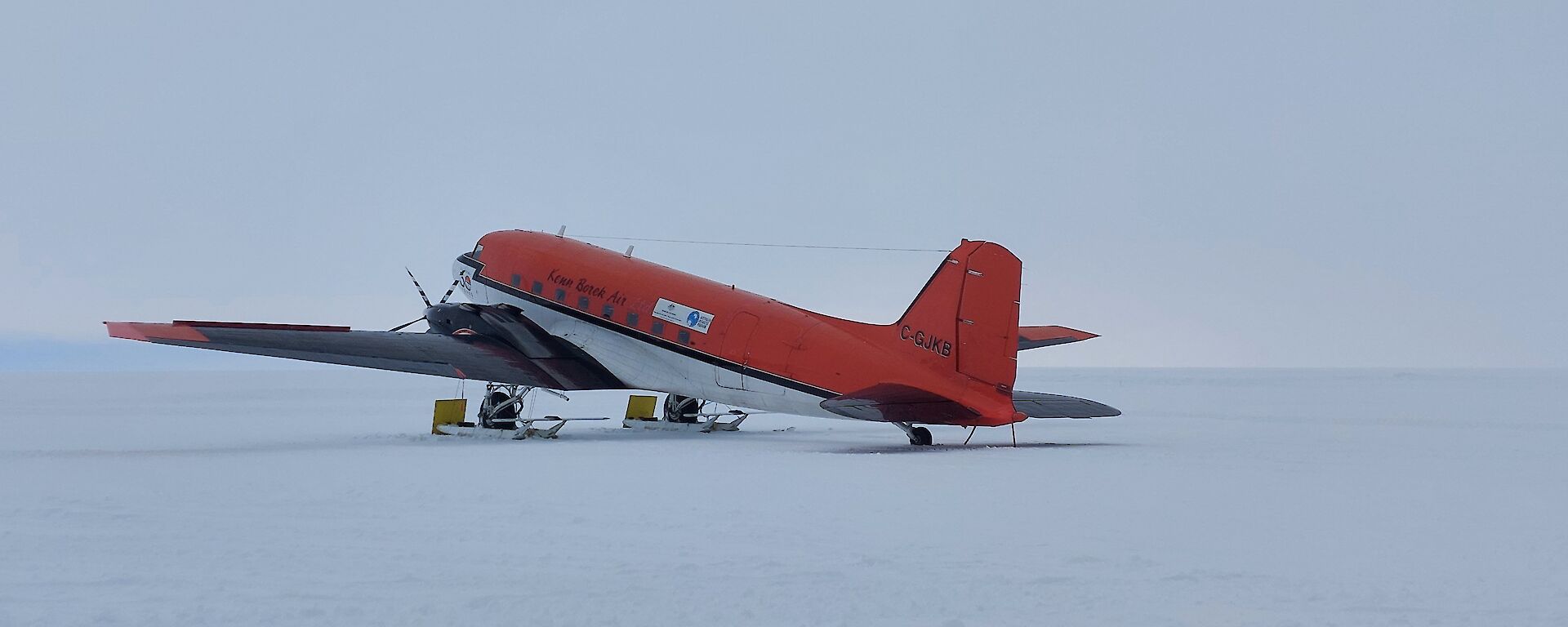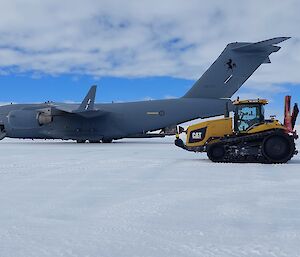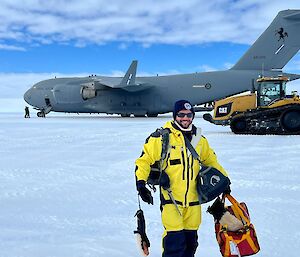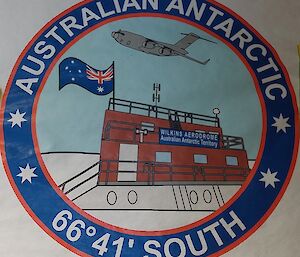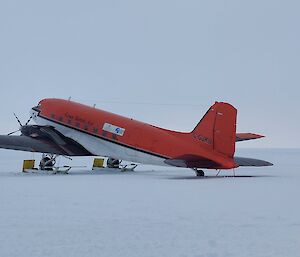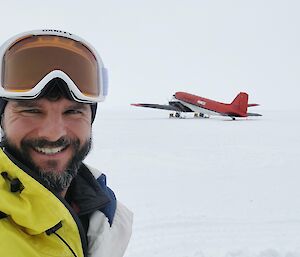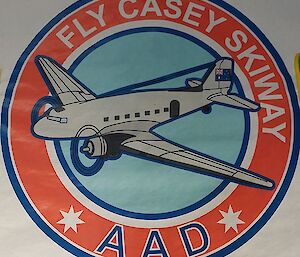When comparing my previous role, working air traffic in the Melbourne terminal area, to my current post as a Communications Operator at Casey, you could say they were polar opposites. But while traffic levels and complexity may be reduced down here, the fundamentals remain the same. We’re here as part of the team that monitor the moving parts in the air, on the ground and occasionally on the water to ensure that everyone is present and accounted for at all times.
When I discovered that my skills as an Air Traffic Controller could be used in Antarctica, a seed was planted. The more I investigated the opportunity, the more intrigued I became. When I saw photos of what looked like a bright red DC-3 with skis for landing gear, intrigue gave way to motivation. The idea that a Second World War era aircraft could be operating down here was the perfect way to get my attention. Five years later and here I am, looking out the Operations Building office window at the icebergs on Newcomb Bay outside Casey Station as the aircraft flies overhead.
The mere logistics involved in how things happen down here are enough to bend the mind a little. The aforementioned DC-3 has been remanufactured and refitted with new turboprop engines, a lengthened and reinforced fuselage, upgraded avionics and has been rebranded as a ‘Basler’. Every summer it makes its way with its partner aircraft - a similarly adapted DHC-6 Twin-Otter - from its home base in Calgary, Canada down through North and South America, across to the British station at Rothera on the Antarctic Peninsula and then via the South Pole and McMurdo - the U.S. station - before heading across to Casey. There’s a poster on a bedroom door down here that reads, “when the last 747 is delivered to the boneyard, there’ll be a DC-3 waiting to pick up the crew.” Anyone that has spent any time in the industry appreciates the sentiment.
Access to Casey via inter-continental aviation operations requires the ice runway at Wilkins (YWKS) aerodrome to be prepared, groomed and calibrated to accommodate aircraft up to the size of a Boeing C-17 Globemaster which was responsible for getting most of us here at the start of the summer season. The fact that an aircraft with a maximum take-off weight (MTOW) of over 265,000kgs can land on an ice runway just over a kilometre long is a testament to physics in itself. Intra-continental aviation activity is based at the Casey Skiway (YCSK) which is a specially prepared surface for the Basler, Twin-Otter and similar aircraft to operate from. The tireless work of the Air-Ground Support Officers (AGSO’s) establishes and maintains the Antarctic connection with both the rest of the continent and home.
I could wax lyrical for some time about how this experience has added value to both my professional and personal life and changed my perspective on things, but at the same time, it’s hard to describe. It’s been the perfect transition out of operational life into whatever happens next and with the summer season quickly approaching its conclusion, it’s an experience that I am incredibly grateful to have been able to share with a particularly special group of expeditioners. Onwards and upwards!
- Sean Menere; Communications Operator.

